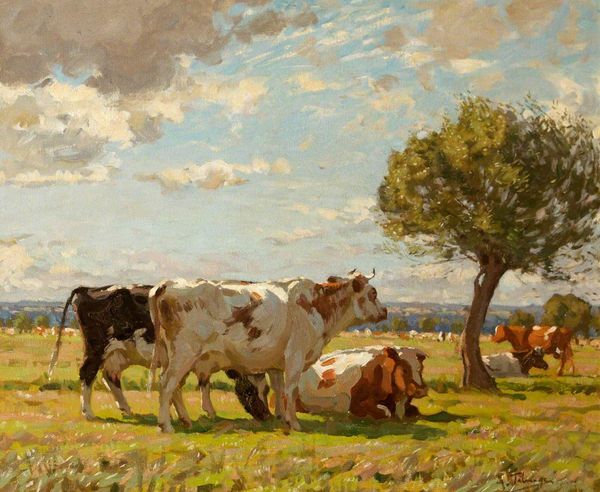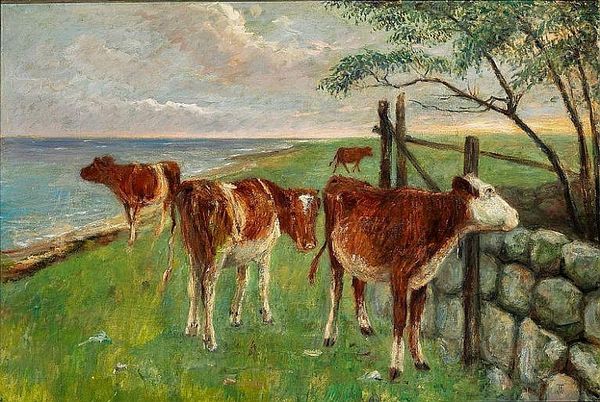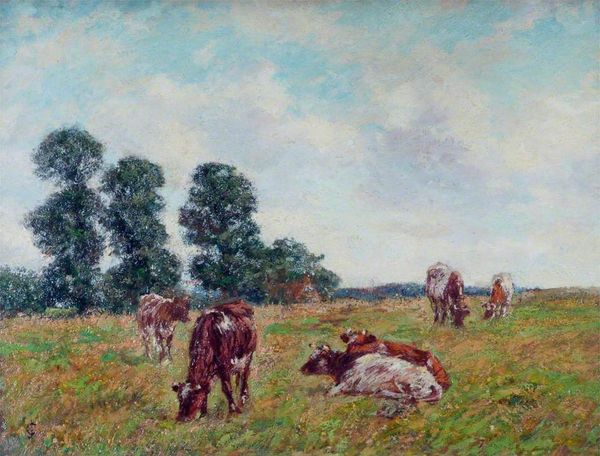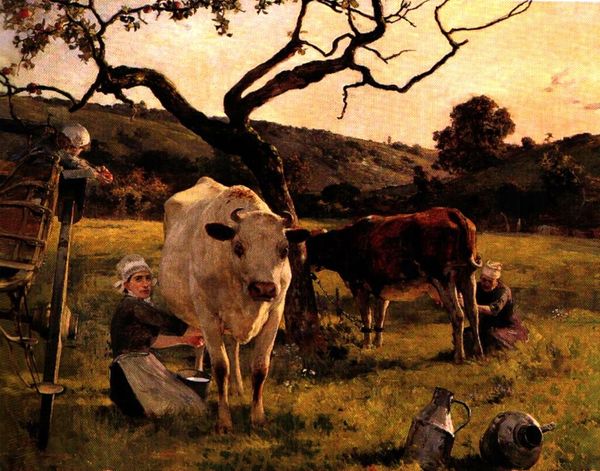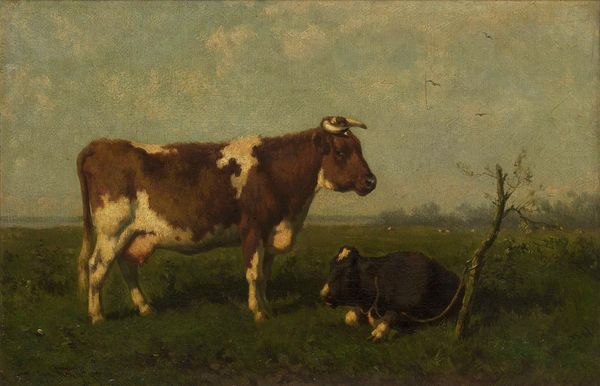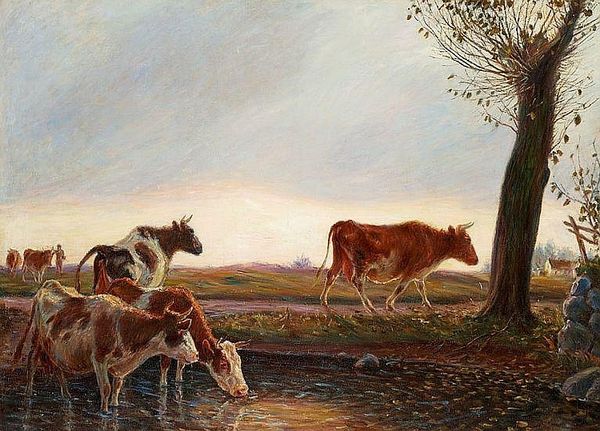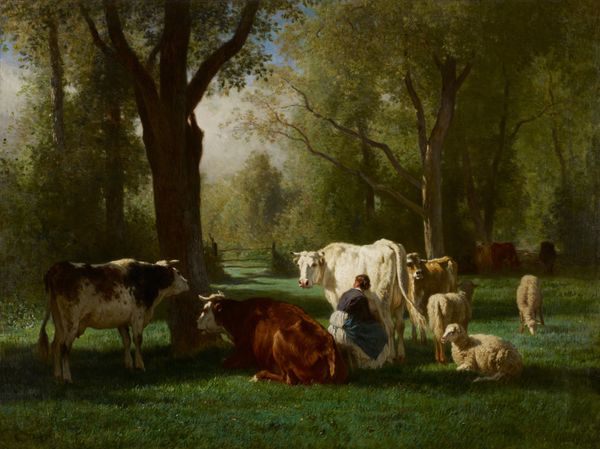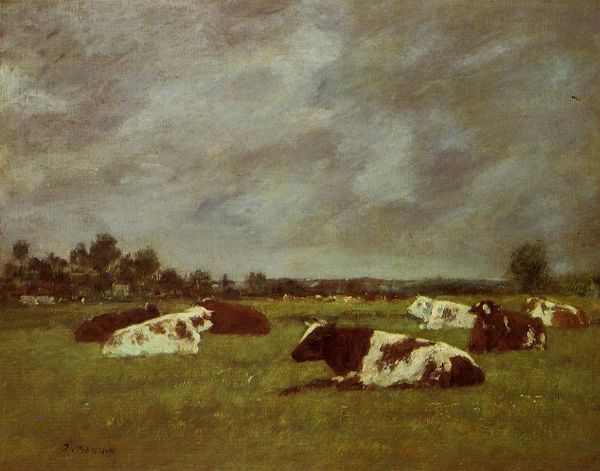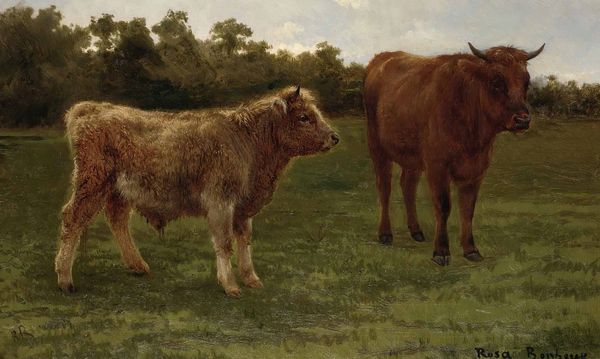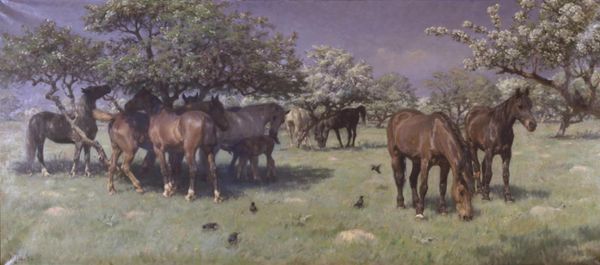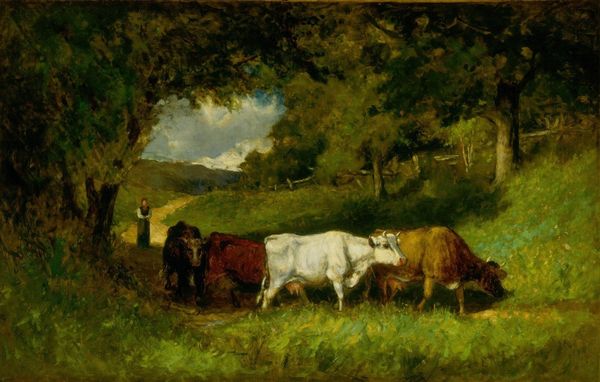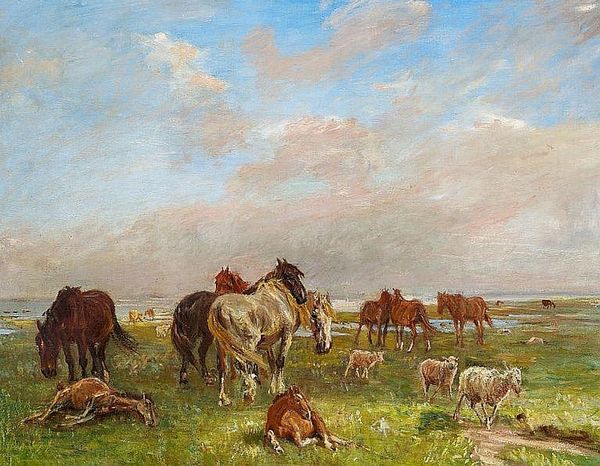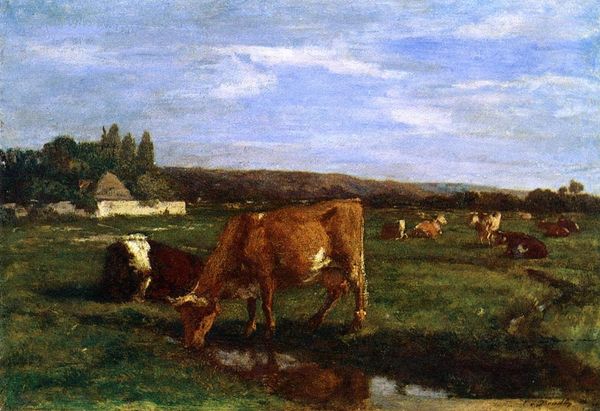
Copyright: Public domain
Curator: Algernon Talmage’s 1920 oil on canvas, "Freshness of Morning," offers a bucolic glimpse into rural life. I am drawn to how the labor is handled in this image. Editor: It strikes me as incredibly peaceful, almost dreamlike. The dappled sunlight filtering through the trees creates a soothing, timeless scene. It seems far removed from the tensions of modern life, a nostalgic vision perhaps. Curator: Nostalgia, yes, but look closely at the process. Talmage, known for painting en plein air, directly confronts the materiality of rural existence, the labor of agricultural economies, and the reality of human dependence on nature. The seated figure performs her task alongside her livestock, emphasizing this interconnected relationship and reflecting a critical understanding of the British social order. Editor: That's a good point. I'm also interested in this image’s quiet commentary on gender roles within this rural setting. While serene, the painting gently focuses on a woman engaged in work, traditionally assigned to her in such settings. The way she seems nestled within the natural world positions women's contributions within nature, labor, and life, providing both comfort and quiet confinement. Curator: The artist's rendering of the light across the canvas is integral. This creates a palpable sense of warmth on the skin, underscoring the experience of working outdoors. We can also think about the commercial nature of "freshness" within capitalist marketplaces: in what ways are consumers disconnected from such modes of agricultural production? Editor: Absolutely. The Impressionistic style, with its broken brushstrokes, further softens the edges and reduces the realities of labor in what becomes an idealized landscape—perhaps concealing those power structures you mentioned. Yet there’s also an inherent respect. Talmage, in focusing our gaze on the interaction of labor, human, animal, and land asks us to value the various, imbricated contributions within this shared agrarian experience. Curator: So the idyllic surface works to both obscure and illuminate the role of humans within ecosystems of capital and manual labor. By returning to such artistic approaches, what possibilities and considerations can we address in contemporary landscapes and visual strategies today? Editor: For me, it calls attention to our contemporary separation from natural and agrarian processes—perhaps inspiring us to reconcile our connections to modes of sustainability, community, and embodied experience within this quickly evolving world.
Comments
No comments
Be the first to comment and join the conversation on the ultimate creative platform.
